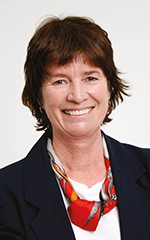

Welcome to another year with SA Instrumentation & Control. May it be a happy and healthy one where you can rise to the challenges ahead and still enjoy all the good things we have in this country.
One thing’s for sure, politics was not boring last year. Elon Musk was top of the list of attention grabbers, not only because of his new best buddy, but also because of the astounding achievement last October of his company SpaceX, with its spectacular first-ever catch of the booster module of its Starship rocket.
This has twice the power of Apollo’s Saturn V, but it was the landing that was extraordinary. A kilometre up, having fallen back from the edge of space and still travelling at the speed of sound, the long steel cylinder, bigger than the fuselage of a Boeing 747, cut its speed to a couple of hundred km/h, leaving it finely balanced on the thrust of just three of its 13 engines. These guided it onto the 146-metre gantry tower, and the arms closed on it as it came to rest. The massive ship fell out of the sky with such precision that it could be gently caught in a huge pair of metal arms.
This did not happen straight away. Starship had already failed many times − blowing up, wrecking its launch site, and pinwheeling uncontrollably through the sky. SpaceX’s existing Falcon 9 rockets have a similar list of spectacular failures. If you feel like a bit of entertainment have a look at the blooper reel, otherwise known as ‘how not to land an orbital rocket booster’.
But there is method behind all the explosions. As Musk says, “If you’re not failing, you’re not innovating enough.”. The idea is that flying lots of hardware and failing often lets you learn from reality, which is the best teacher of all. I think I like this approach. This is at odds with NASA’s traditional structured mindset, but the results tell the story. SpaceX’s Falcon rockets have now made more than 350 successful landings and brought down the price of a launch by a factor of ten. A much bigger and fully reusable Starship should do as much again, and more. The cost of putting stuff up in space should be reduced dramatically. This means that the amount of cargo that it can put into orbit is likely to grow spectacularly in the next few years. It is potentially the biggest leap forward in spaceflight since the 1960s, and it has brought us closer to new possibilities beyond Earth, not least Musk’s dream of colonising Mars. He is talking of sending five uncrewed Starships there in 2026, and crewed ones soon after that.
This reminds me of a MESA conference I attended a while ago, where I was privileged to have lunch with theoretical physicist and quantum biology researcher, Dr Adriana Marais, who was on the Mars One shortlist of 100 to go to Mars – one way. When I first heard of the project I thought the aspiring Martians were quite crazy, but Adriana convinced me otherwise. She had us spellbound with her vision of life on Mars, and the potential for this project to generate new technologies which could benefit people on Earth in ways we can’t yet imagine. Sadly the Mars One project went bankrupt, but the dream lives on. She says that we’re just doing in terms of space travel what we’ve always done exploring the globe. Practically, the journey would take seven months. You would have access to the internet and everything that this brings. The signal takes seven minutes to reach Earth, so you would have to wait only 14 minutes for a response when you Whatsapp your mom.
The components needed for a Mars mission would probably be blasted into low earth orbit, then towed to cislunar space and assembled there. You expend about 80% of the energy it takes to get to Mars just to get to lower earth orbit. The first 250 km are the hardest, and the other 250 million are actually quite easy. You can store things like fuel and habitation modules in lower earth orbit, to be assembled and used later on – a bit like the base camp for a mountain expedition; and 3D printing would be a critical resource – if you need a certain size spanner for example.
The old rules of space no longer apply. Now anyone with enough money and initiative can go there. I won’t be on any list to go to Mars, but I’ll definitely be following SpaceX.
| Tel: | +27 11 543 5800 |
| Email: | [email protected] |
| www: | www.technews.co.za |
| Articles: | More information and articles about Technews Publishing (SA Instrumentation & Control) |

© Technews Publishing (Pty) Ltd | All Rights Reserved